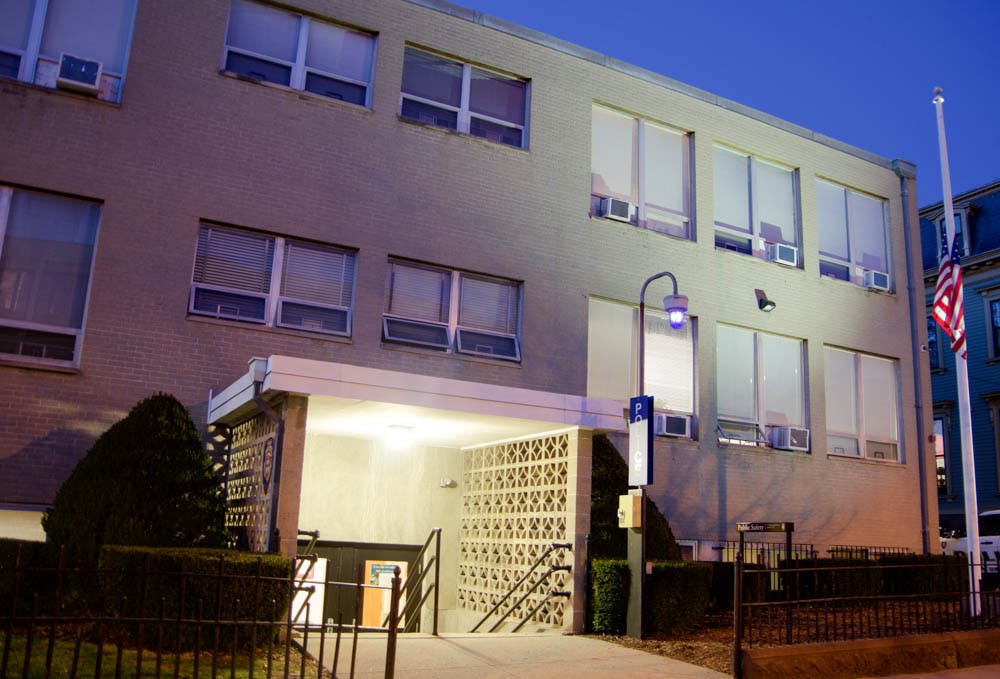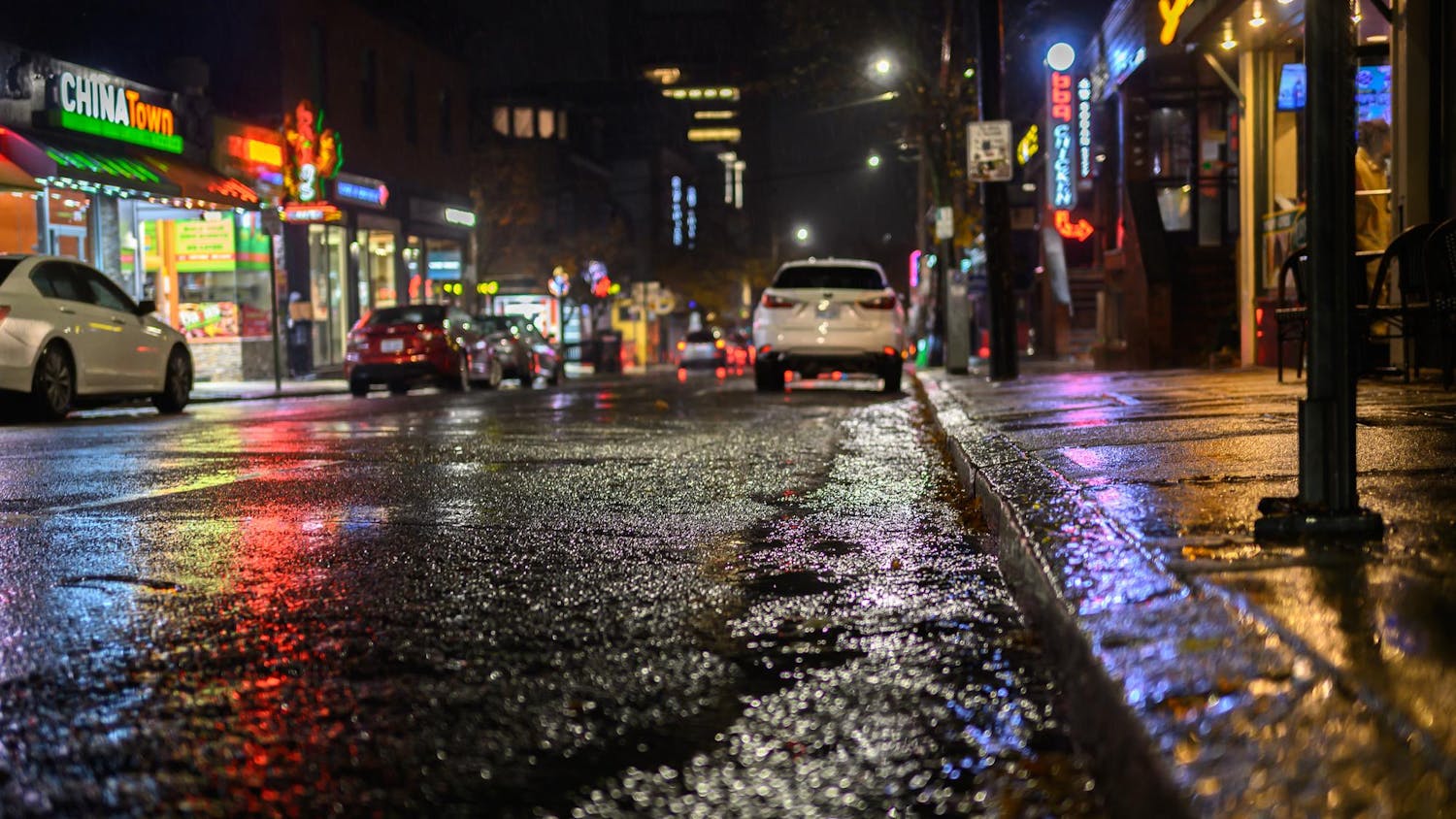The Department of Public Safety will face assessors from the Commission on Accreditation for Law Enforcement Agencies March 29, according to a University press release. The assessment will include a public information session and forum March 30, which is during the University’s spring break. Those unable to attend can offer comment over the phone between 1 p.m. and 3 p.m. the same day.
“DPS had requested an on-site visit later in the semester, when all Brown students would be present on campus, but CALEA assigns dates and was unable to meet that request — hence their visit next week,” wrote Brian Clark, director of news and editorial development, in an email to The Herald.
“The accreditation program requires the department to comply with 484 standards,” Clark wrote. “These are standards to which DPS is dedicated year in and year out, so the department is confident as it begins the reaccreditation process,” he added.
DPS has been at the forefront of campus discourse over the past two semesters as the conduct of police with respect to the handling of weapons and the use of force has come under fire on a national level. Furthermore, a number of incidents involving DPS — including the firing of a DPS officer over his interaction with a visiting student during the Latinx Ivy League Conference and the Brown University Security Patrolperson’s Association vote of no confidence in Chief of Police Mark Porter and Deputy Chief of Police Paul Shanley — have fueled the discussion of the department’s role on campus.
Dajani_DPS_EmmaJerzyk
History of DPS arming
In July 1998, DPS obtained accreditation from the CALEA — a measure that granted it the same rights as state authorities.
The Brown Police Department faces reaccreditation every three years and “must submit annual reports attesting to continued compliance with the standards under which it was initially accredited,” Clark wrote.
In 2003, the University “commissioned a study of campus security and safety by consultants under the leadership of William Bratton,” then-chief of the Los Angeles Police Department and current New York Police Commissioner, according to a 2003 University press release. The aim of this analysis was to “identify lasting, long-term solutions to safety problems at Brown while retaining the free and open character of the Brown campus and community,” the Bratton Group wrote in its 2002 report, which was titled the “Plan of Action for the Brown University Police and Security Department.”
The report highlighted potential DPS policy changes, some of which would aim to help the organization better combat violent street crime while granting officers sufficient protection from assailants — including the possibility of arming campus police.
The Bratton Group — comprised of “two non-police members, three attorneys (one of whom is the former president of Handgun Control) and former police executives with a wide range of experience in different law enforcement venues” — voted unanimously to arm the Brown police, according to the report.
At the time, some opponents of the arming believed that a firearm presence on campus — even in the hands of the police — would create a more dangerous environment, as it would “introduce the element of deadly force with unforeseen, irretrievable and possibly calamitous consequences such as the wounding or killing of a student,” the 2002 report reads. Others were concerned that armed officers would feel empowered by their weapons and would thus be more likely to display excessive uses of force. Some worried that this “awesome power of life and death” would worsen any institutional or personal racism within the department, the report notes.
Former President Ruth Simmons and Porter spearheaded the process to arm the campus police force in early 2006. Simmons’ Jan. 11, 2006 community-wide announcement maintained that “only campus police officers, who are police academy graduates, licensed by the Superintendent of the Rhode Island State Police and authorized to enforce state statutes as well as University rules and regulations” were to handle weapons. The announcement also detailed the extensive preparation and training procedures — criminal background checks, psychological testing and 600 hours of formal training at the Municipal Police Academy — that made the program viable.
DPS today
When DPS was initially armed in 2006, it was a 33-member force.
Today, DPS has a force of 51 sworn officers, Shanley wrote in an email to The Herald. No officer has ever fired a weapon while on duty, he wrote.
Of the 51 officers, 17 percent are African American or Hispanic, Shanley wrote in an email to The Herald. “Our sworn officers are diverse … and receive annual supplemental training with an emphasis on serving a diverse college-age community,” Shanley added.
The firearm training process is “still ongoing, and we as police officers have to qualify,” Shanley told The Herald. “We do firearms training annually, where we go through a course to demonstrate our proficiency and have to use examples of shoot, don’t shoot. We also do night qualifications where we shoot in the dark.” He added that, more recently, the department has started preparing “tactical building entries” and “tactical shields” in the event of an active shooter on campus.
The training of DPS officers in weapon use and “effective community policing” is necessary because “students, faculty (members) and staff (members) expect the same level of protection from our officers as they would receive from local police,” Shanley wrote in an email to The Herald.
During a demonstration in December, students gathered in the office of President Christina Paxson P’19 to develop demands in response to the initial draft of the University’s Diversity and Inclusion Action Plan. One of the main demands students brought to Paxson’s attention was the disarming of DPS. Paxson responded that she believes DPS should “absolutely” be armed.
The final draft of the DIAP states that the Public Safety Oversight Committee will release an assessment of the department by the end of this academic year.
During the demonstration, Paxson responded to a student’s concerns about DPS in saying, “If they’re not policing here, Providence Police are policing here.”
While DPS officers are well-trained to handle campus crimes, the department has maintained a collaborative relationship with local Providence police that involves “concurrent jurisdiction” over the areas DPS patrols, Shanley wrote in an email to The Herald. “We call them for assistance for crimes that take place on the streets that our officers observe,” he wrote.
The Providence Police can enter Brown’s campus at any time to respond to an incident, but “they respect our knowledge of our campus and our community, while their resources are an additional asset for protecting the community,” he added.
The debate on arming
Students hold a range of views on whether and to what degree DPS officers should be armed.
“As a white man, the DPS being armed represents something completely different to me than it does to other students here,” said Brendan Gaffney ’19. But “the primary concern of the administration and students should be collective security, and so if the only apparatus that we have to secure the campus is not armed, then what defense do we have against a potential terrorist attack, against a potential school shooting?”
“DPS should absolutely be armed,” said Emanuel Dallas ’18, adding that there have been no instances of a DPS officer “improperly using a firearm.”
“It is ironic that the people complaining about armed officers threatening their safety are supporting an action that will make the campus significantly more unsafe for all students,” Dallas said. He added that he wants to attend a university in which there is “a police force that can respond to serious on-campus dangers — which, unlike misuse of police firearms, actually do happen at colleges.”
Ezza Ahmed ’19 said that officers should still have general access to firearms — either in police cruisers or at the department headquarters — to deal with cases “where a non-college student is threatening the life of another person.” But “when it has to do with students from Brown, and there’s a situation where there’s a college party or something like that, they should not be allowed to have a weapon.”
Ahmed said she worried that “when police officers are dealing with someone who’s belligerent,” they will act to protect themselves and might use weapons unnecessarily.
President of the Providence NAACP James Vincent said he thinks DPS should not be armed, “because of a philosophical feeling that campus police probably shouldn’t be armed.”
“A majority of institutions of higher education have sworn and armed officers,” Shanley wrote, citing a 2004-2005 survey completed by the Bureau of Justice Studies of the U.S. Department of Justice. The study revealed that 67 percent of campus law enforcement agencies surveyed used armed campus officers during the 2004-2005 school year. A total of 750 law enforcement agencies were surveyed. In addition, “90 percent of agencies with sworn officers were armed,” Shanley wrote.
Many sources noted that transparency about DPS’s policies is key to maintaining the safety of the student body.
“We should be informed of their policies and develop a better understanding of what they’re there for and how we can best work with them to make sure that our safety is prioritized,” Gaffney said.
“I do trust the department to a reasonable extent, but I can understand if others don’t. I only feel informed because I’m pretty friendly with an officer. I thought (Executive Vice President for Planning and Policy Russell Carey’s ’91 MA’06) letter about the termination of the officer involved in the Latinx conference was not very informative at all,” said David, a sophomore who wished to remain anonymous for fear of backlash for his views.
“I do think DPS should be armed, but with use of nonlethal force prioritized obviously and mandatory diversity training,” David said.
In response to students’ concerns about the potential for DPS officers to fire their weapons when tensions escalate, Shanley wrote, “Officers currently have a continuum of strategies available, ranging from verbal persuasion techniques to physical restraint.”
Members of the Black Student Union and Brown Democrats declined to comment for this story. Members of Brown Republicans, the Public Safety Oversight Committee and the Brown NAACP could not be reached for comment. Signatories of the Brown University 2015 Latinx Ivy League Conference delegation could not be reached for comment.
— With additional reporting by Agnes Chan

ADVERTISEMENT




